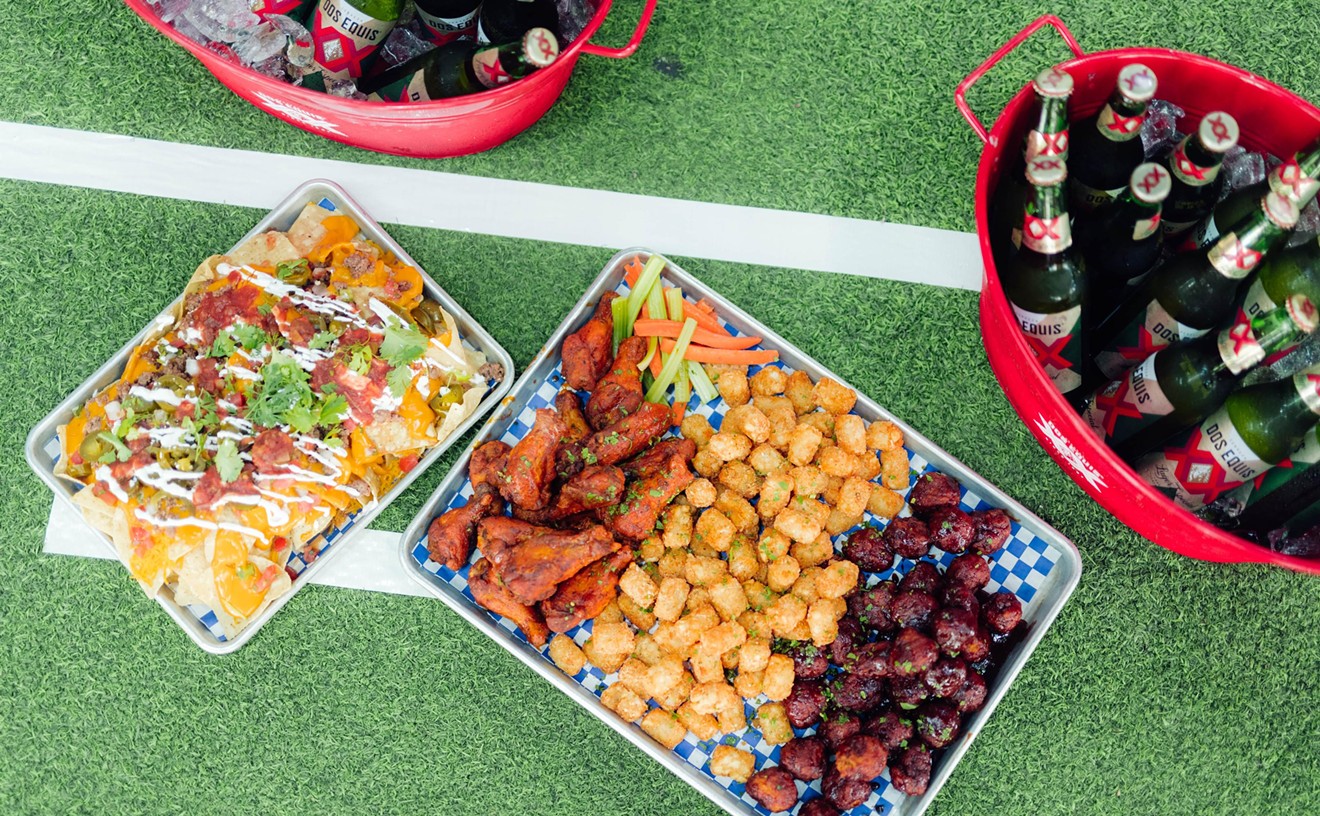Let's face it — even though the island is a U.S. territory, its culture hasn't seeped into the mainstream in the same way as tropical vacation favorites like Hawaii and Jamaica. I'd never eaten Guamanian food, either, but I felt like I had an idea of it. (Sometimes my overactive imagination makes me hungry.)
"Well, it's similar to Hawaiian food, with a lot of Asian influences . . ." I explained to my puzzled friends.
There were a few glimmers of recognition, but I wasn't sure if anyone really got what I was talking about. Later, in a burst of blunt honestly, another friend asked, "Where exactly is Guam? Isn't it in the Caribbean, or in Latin America somewhere?"
Uh, no. Sorry. Not even close. But that's okay — that's the beauty of trying food from an unfamiliar, far-flung place. You end up getting a geography lesson with lunch, which goes a long way in explaining an eclectic, little-known cuisine.
In this case, we're talking about food from the largest island in Micronesia, where the North Pacific Ocean meets the Philippine Sea. It's 210 square miles of mountains, forests, grasslands, and white-sand beaches. While the indigenous Chamorro culture is alive and well, Guam's also been influenced by Spain (it was a Spanish colony for more than two centuries), Japan (which occupied it during World War II), and the United States (after the Spanish-American War, and since 1944).
For dining adventurers, all that history has amounted to a homey fusion of barbecued and teriyaki-marinated meats, spicy seasonings, plenty of rice, and even some Spam for good measure.
That's right, Spam. Consider it a culinary legacy of American troops stationed in the Pacific during the war. Even now, Spam's a staple in Guam, where it's served fried, with eggs and rice, or wrapped with rice and seaweed, sushi-style, to make Spam musubi.
First time I heard of Spam musubi ("musubi" means rice balls in Japanese), it sounded just plain wrong. One of my college roommates, a Hawaiian native, started frying it up, and soon our whole apartment smelled like canned meat.
"C'mon, dude — you'll like it," he insisted, with his laid-back surfer accent.
I protested at first, but came around to it pretty quickly. When I saw it on the menu at Island Roots, I was excited to try it again. Their version had a thick slice of fried Spam atop a moist layer of rice that was slightly sweeter than ordinary sushi rice. Instead of the thin strip of nori that holds together nigiri sushi, the whole musubi was wrapped in it.
It was tasty, to be sure, but I was more excited by the chicken kelaguin, a zesty cold salad of chopped chicken tossed with onion, red chile, and lemon. The dish was spicy but refreshing in a way that reminded me of good ceviche or Thai payaya salad.
My dining companions and I raved about the shrimp patties, four golden fritters studded with bits of shrimp, peas, and corn. The shrimp flavor wasn't overpowering; really, the appeal was in the batter. Lumpia were addicting, too. These delicate Filipino-style spring rolls, filled with ground beef, cabbage, carrots, and celery, were light, crisp, and hot out of the fryer. As for the potato macaroni salad, it was creamy and delicious, a guilty pleasure.
I expected a side of pickled cucumbers and daikon to be light and tangy, like Japanese sunomono, but what showed up at our table was more like Korean kimchi (which I love). The vegetables were thickly crinkle-cut and dressed in a spicy-sweet chile sauce — a welcome foil for the rich, meat-centric dishes to come.
Rice was served with many entrees at Island Roots, and given the choice between sticky white rice, or "red rice," a mild, vaguely nutty rice that's actually tinted orange (thanks to the addition of achiote), I went with the latter. Another accompaniment to several dishes was finadene, a potent, soy-based dipping sauce flecked with scallions. I liked it but had to use it sparingly — the intensely vinegary, spicy, and salty flavors made my lips tingle.
Pancit, a Filipino dish likened to lo mein on the menu, was lighter and tangier than Chinese pan-fried noodles, with carrots, celery, onion, and shrimp tossed in rice noodles. Since it didn't come with any side dishes, a whole bowl of it was a little much; next time, I'd order that to share as an appetizer.
What I would not care to share is the Kalua pig, a heap of moist, mildly smoky slow-roasted pork, suitable for my own private luau. Pork adobo, braised in vinegar, garlic, and pepper, had a nice flavor as well, although I wasn't happy to come across a few bony pieces in the stew. (Eat that one with caution.)
Bulgogi, the classic Korean beef dish, was my least favorite item at Island Roots — it had been marinated to the point that teriyaki saltiness overwhelmed the taste of the meat itself. Barbecued chicken was also less than stellar, thanks to a couple of dry drumsticks included in my order. Barbecued pork ribs, thickly cut with lots of rich, smoky meat, were a better choice.
The things I enjoyed most turned out to go best with that red rice I mentioned. A plate of spicy Portuguese sausage, served with two eggs, tasted great with forkfuls of rice, and so did the kadun huang, a savory stew of shrimp, tender tomato chunks, onions, and green bell pepper in a creamy coconut milk sauce. Just the sauce alone, spooned over some red rice, was delicious.
The kitchen at Island Roots was very generous with portions, and by the end of the meal, I was fantasizing about a nap. But several kinds of cake made the dessert menu too tempting to ignore. Moist, bright pink guava cake, topped with creamy vanilla icing and a layer of sweet guava jelly, was a big hit — and big enough for the whole table to sample. Meanwhile, I was content to work on my own piece of latiza, a traditional Guamanian dessert with thick, creamy vanilla custard blanketing a thin layer of white cake. With a dash of cinnamon on top, its luscious flavors reminded me of rice pudding.
Like most everything else at Island Roots, it was a little bit foreign, a little bit familiar, and entirely worthy of further exploration.










